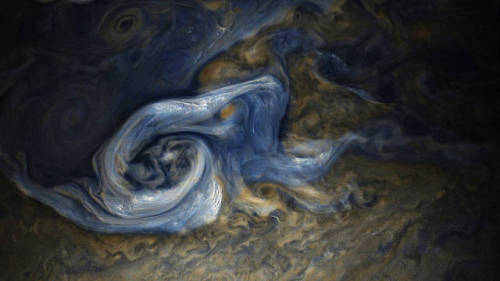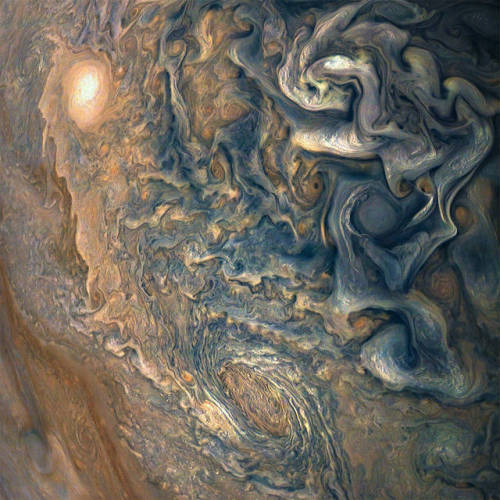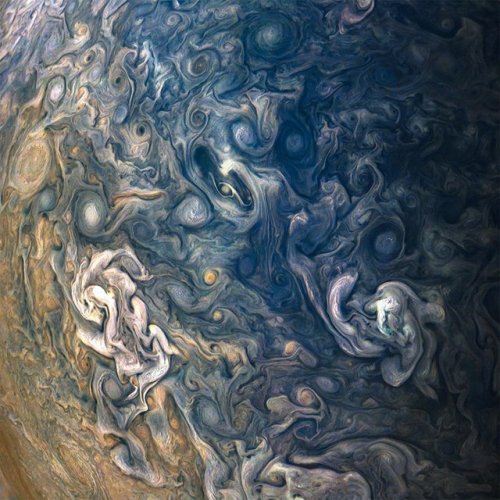Using All Of Our Senses In Space
Using All of Our Senses in Space
Today, we and the National Science Foundation (NSF) announced the detection of light and a high-energy cosmic particle that both came from near a black hole billions of trillions of miles from Earth. This discovery is a big step forward in the field of multimessenger astronomy.
But wait — what is multimessenger astronomy? And why is it a big deal?
People learn about different objects through their senses: sight, touch, taste, hearing and smell. Similarly, multimessenger astronomy allows us to study the same astronomical object or event through a variety of “messengers,” which include light of all wavelengths, cosmic ray particles, gravitational waves, and neutrinos — speedy tiny particles that weigh almost nothing and rarely interact with anything. By receiving and combining different pieces of information from these different messengers, we can learn much more about these objects and events than we would from just one.

Lights, Detector, Action!
Much of what we know about the universe comes just from different wavelengths of light. We study the rotations of galaxies through radio waves and visible light, investigate the eating habits of black holes through X-rays and gamma rays, and peer into dusty star-forming regions through infrared light.

The Fermi Gamma-ray Space Telescope, which recently turned 10, studies the universe by detecting gamma rays — the highest-energy form of light. This allows us to investigate some of the most extreme objects in the universe.

Last fall, Fermi was involved in another multimessenger finding — the very first detection of light and gravitational waves from the same source, two merging neutron stars. In that instance, light and gravitational waves were the messengers that gave us a better understanding of the neutron stars and their explosive merger into a black hole.

Fermi has also advanced our understanding of blazars, which are galaxies with supermassive black holes at their centers. Black holes are famous for drawing material into them. But with blazars, some material near the black hole shoots outward in a pair of fast-moving jets. With blazars, one of those jets points directly at us!
Multimessenger Astronomy is Cool

Today’s announcement combines another pair of messengers. The IceCube Neutrino Observatory lies a mile under the ice in Antarctica and uses the ice itself to detect neutrinos. When IceCube caught a super-high-energy neutrino and traced its origin to a specific area of the sky, they alerted the astronomical community.
Fermi completes a scan of the entire sky about every three hours, monitoring thousands of blazars among all the bright gamma-ray sources it sees. For months it had observed a blazar producing more gamma rays than usual. Flaring is a common characteristic in blazars, so this did not attract special attention. But when the alert from IceCube came through about a neutrino coming from that same patch of sky, and the Fermi data were analyzed, this flare became a big deal!

IceCube, Fermi, and followup observations all link this neutrino to a blazar called TXS 0506+056. This event connects a neutrino to a supermassive black hole for the very first time.

Why is this such a big deal? And why haven’t we done it before? Detecting a neutrino is hard since it doesn’t interact easily with matter and can travel unaffected great distances through the universe. Neutrinos are passing through you right now and you can’t even feel a thing!
The neat thing about this discovery — and multimessenger astronomy in general — is how much more we can learn by combining observations. This blazar/neutrino connection, for example, tells us that it was protons being accelerated by the blazar’s jet. Our study of blazars, neutrinos, and other objects and events in the universe will continue with many more exciting multimessenger discoveries to come in the future.
Want to know more? Read the story HERE.
Make sure to follow us on Tumblr for your regular dose of space: http://nasa.tumblr.com
More Posts from Ocrim1967 and Others
Puppies Make Me Happy






















The Planets and their respective sizes compared to our Sun.
I love flowers 💐❤️




















Swirls of Jupiter
Jupiter is a very stormy, turbulent, violent planet. The planet completes a day (or one complete rotation) within roughly 10 hours, which creates massive winds, producing these swirls, and violent storms. The fast rotation coupled with the fact that the planet is nothing but gas greatly multiplies the Coriolis effect. Earth too has a Coriolis effect, this creates the characteristic hurricane shapes and also contributes to the fact that storms will spin the opposite direction in different hemispheres. Luckily, our rotation is slower - our storms are less frequent and less violent than they would be if our days were shorter.
The above images come from the recent Juno mission by NASA.
The Smoke From a (Not-so) Distant Fire
Flying directly through thick plumes of smoke may seem more harrowing than exciting. But for members of the CAMP2Ex science team, the chance to fly a P-3 Orion straight through clouds of smoke billowing off fires from Borneo this week was too good an opportunity to pass up.

CAMP2Ex stands for the Cloud, Aerosol and Monsoon Processes in the Philippines Experiment. The 2, by the way, is silent.

It’s a field campaign based out of Clark in the Philippines, flying our P-3, a Learjet and collaborating with researchers on the research vessel Sally Ride to understand how tiny particles in the atmosphere affect cloud formations and monsoon season.

The tiny aerosol particles we’re looking at don’t just come from smoke. Aerosol particles also come from pollution, billowing dust and sea salt from the ocean. They can have an outsized effect on weather and climate, seeding clouds that bring rain and altering how the atmosphere absorbs the Sun’s heat.

The smoke we were flying Monday came from peat fires, burning through the soil. That’s pretty unusual — the last time Borneo had these kind of fires was in 2015, so it was a rare opportunity to sample the chemistry of the smoke and find out what’s mixing with the air.

The planes are loaded with instruments to learn more about aerosol particles and the makeup of clouds, like this high-speed camera that captures images of the particles in flight.

One instrument on the plane collects droplets of cloud water as the plane flies through them, and on the ground, we test how acidic and what kind of particles form the cloud drops.

All of these measurements are tools in improving our understanding of the interaction between particles in the air and clouds, rainfall and precipitation in the Pacific Ocean.

Learn more about the CAMP2Ex field campaign, here!
Make sure to follow us on Tumblr for your regular dose of space: http://nasa.tumblr.com








CAPE CANAVERAL, Fla. – Space shuttle Discovery lifts off Launch Pad 39A in a billowing swirl of smoke and steam at NASA’s Kennedy Space Center in Florida, beginning its final flight, the STS-133 mission. Launch to the International Space Station was at 4:53 p.m. EST.
Credit: NASA


Chandra Spots Extremely Long Cosmic Jet in Early Universe
http://www.sci-news.com/astronomy/chandra-extremely-long-cosmic-jet-early-universe-09436.html
Take me back to California 🌴❤️

















Comet McNaught next to the dome of the NTT on La Silla. The picture was taken in January 2007.
Credit: ESO/H.H.Heyer
-
 kateppg liked this · 3 months ago
kateppg liked this · 3 months ago -
 azazuciuzuzi liked this · 4 years ago
azazuciuzuzi liked this · 4 years ago -
 gloriousclamalmondjudge liked this · 4 years ago
gloriousclamalmondjudge liked this · 4 years ago -
 spikyboy liked this · 4 years ago
spikyboy liked this · 4 years ago -
 suebsnzjs liked this · 4 years ago
suebsnzjs liked this · 4 years ago -
 snugglelicious-blog liked this · 4 years ago
snugglelicious-blog liked this · 4 years ago